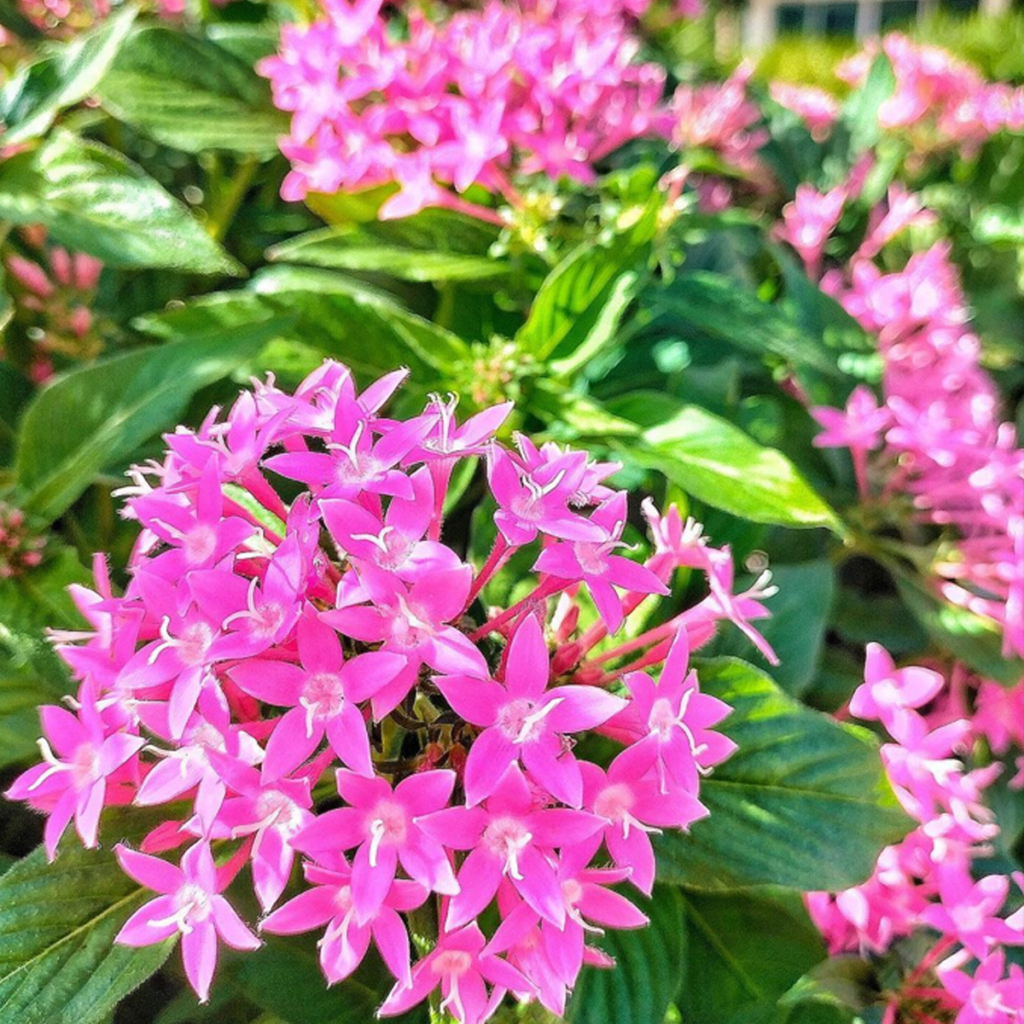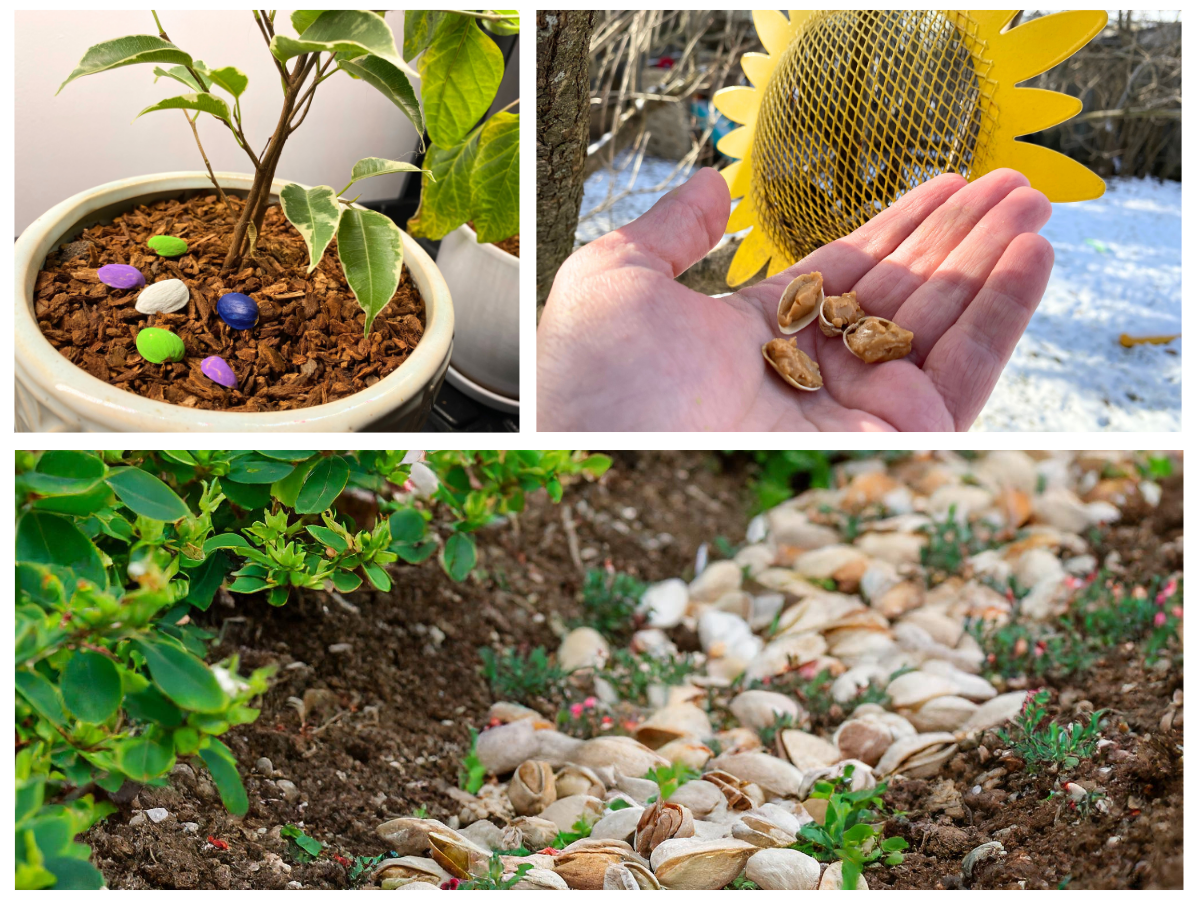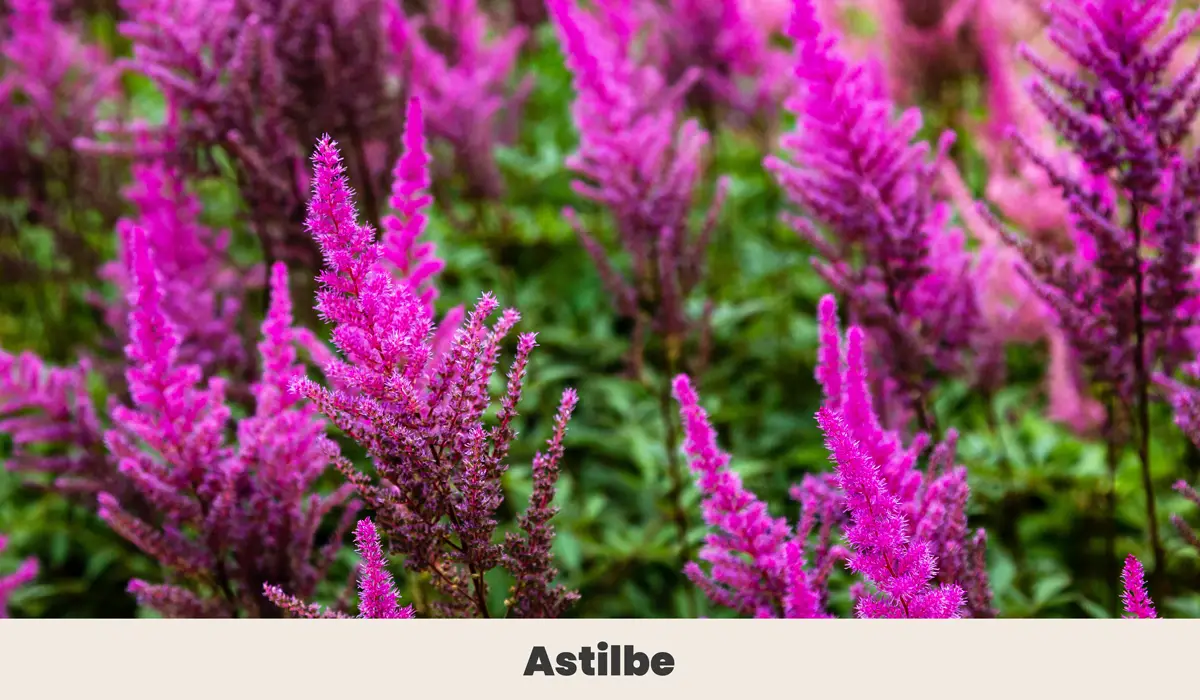11 Fall Blooming Perennials for Your Garden + Growing Guide
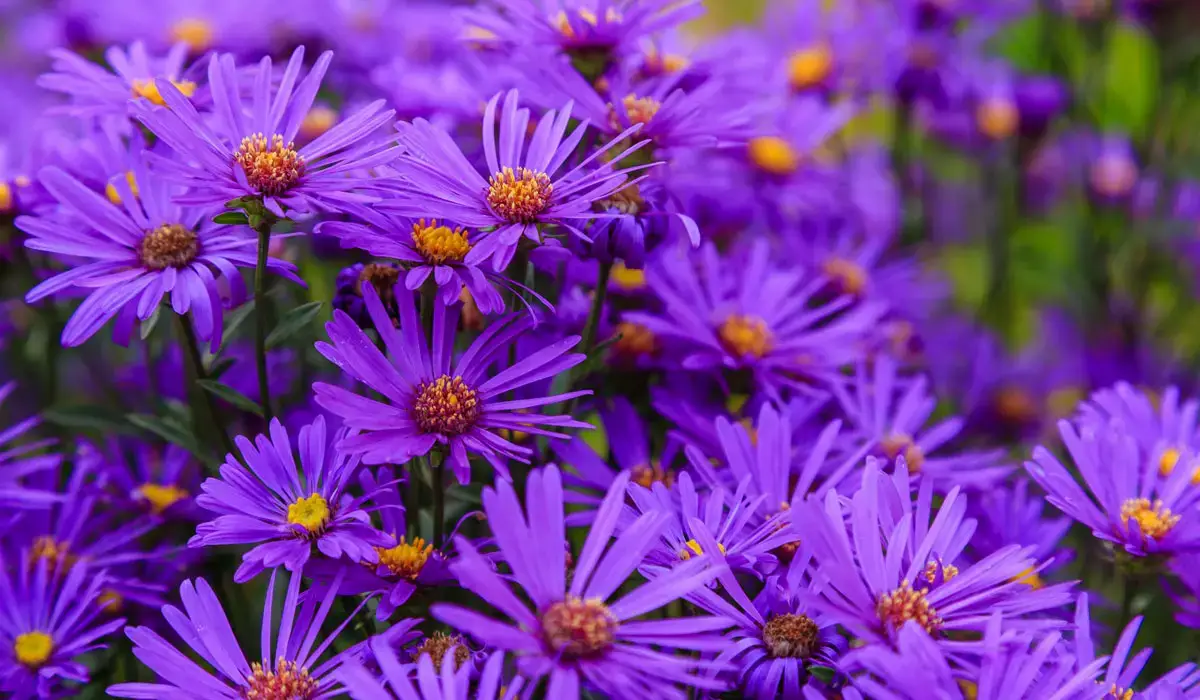
There is nothing quite like the changing leaves of fall, but did you know that there are fall blooming perennials you can also add to your garden? Planting flowers and watching them bloom isn’t solely associated with the spring and summer months. In fact, there are many flowers that appear toward the tail of summer and the beginning of fall.
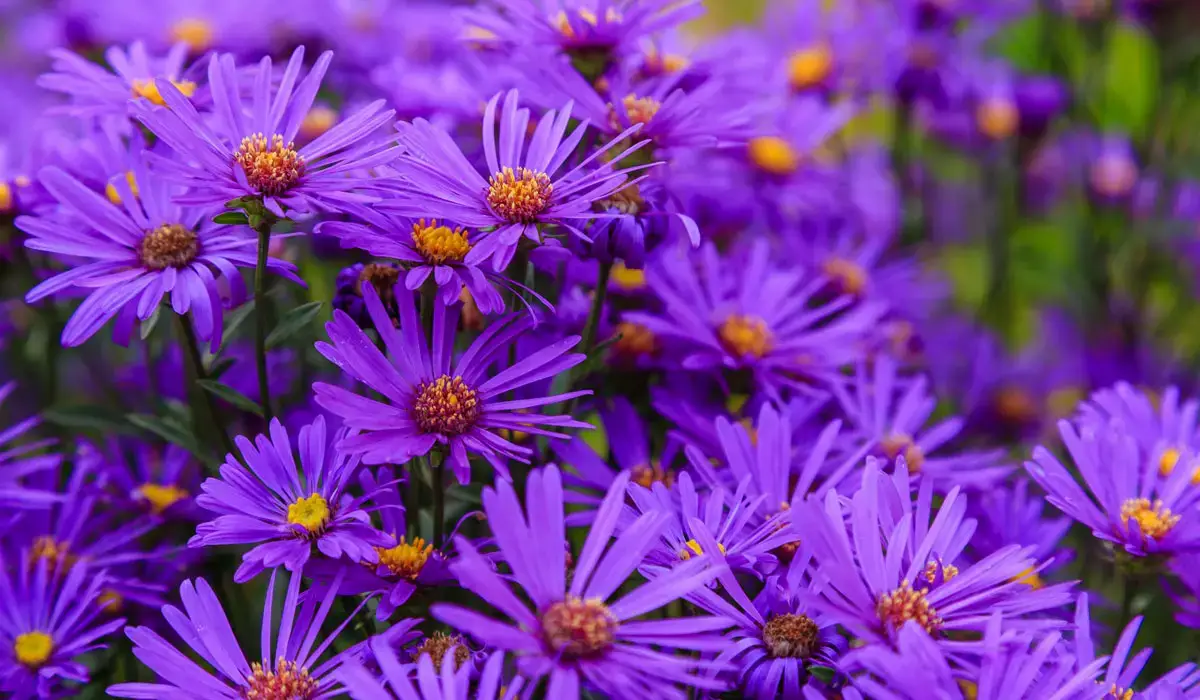
Let’s take a look at some of my favorite fall-blooming perennials and “purple weeds with flowers” that you could add to your autumn garden.
1. Autumn Crocus (Colchicum autumnale)

Also known as “Naked Ladies” because they don’t bloom with leaves (like other plants), Autumn Crocus are beautiful, lilac flowers that appear any time between late winter to early spring. However, if you want them to be seen in the fall, it’s best to plant them in mid-to-late summer. When they blossom, they will have a star-shaped flower.
While beautiful, these flowers are incredibly toxic to both people and animals, so it’s best to keep them outdoors, especially if you own a cat or dog. They are relatively low-maintenance and, when planted in your garden, naturally repel rabbits. Here’s an overview of how to care for these lavender flowers:
| Botanical Name: | Colchicum autumnale |
| Growth Rate: | 6-9″ tall/wide |
| Native Range: | Asia, North Africa, and Europe |
| Hardiness Zones: | 4-8 |
| Dangers: | Toxic to both animals and people |
| Soil Needs: | Rocky/loamy, well-draining soil |
| Tolerate: | Can tolerate partial shade and droughts, but prefers full to partial sun |
| Ease of Care | Low maintenance |
| Diseases | Fusarium fungal rot |
| Propagation | Should be divided every 3-4 years, dig up plant and tear off the corms during the summer to replant in a bulb |
| Fertilizer | Fertilizer not needed, but can tolerate bone meal when first planted |
| Pests | Snails, slugs, and mice |
| Blooming Period | Late winter to early spring |
| Pruning | Cut back after foliage turns yellow |
| Water needs: | 1″ of water weekly during the spring and when flowers appear |
2. Joe Pye Weed (Eutrochium purpureum)

As more people focus on planting native gardens to help the bee population, Joe Pye Weed is often one of the most popular plants added because they are natural pollinators. As such, they not only attract honey and bumble bees, but butterflies, as well.
Pye Weed is a native plant in North America and when in bloom, has beautiful light purple flowers. This plant can add color and interest to your native garden. Best of all, they are easy to care for. Just make sure they are planted in moist, well-draining soil and you’ll get to enjoy this perennial plant year after year.
| Botanical Name: | Eutrochium purpureum |
| Growth Rate: | 4-12′ tall and 2-7′ wide |
| Native Range: | North America |
| Hardiness Zones: | 4-9 |
| Dangers: | None |
| Soil Needs: | Moist, well-draining soil |
| Tolerate: | Full and partial sun/light shade, but too much shade can lead to plant disease |
| Ease of Care: | Low-maintenance |
| Diseases: | Disease-free, however, can develop powdery mildew on the leaves |
| Propagation: | Divide in the spring and fall seasons; cut stems with roots and replant in your garden |
| Fertilizer: | Fertilizer not needed, however, compost can be added to soil during the spring |
| Pests: | Gnats, small birds, leaf beetles, tree hoppers |
| Blooming Period: | Period: 1 month, mid-summer to fall |
| Pruning: | Trim stalks to 8″ during the fall and prune new stalks throughout the winter |
| Water needs: | Consistent watering; water as soon as soil dries out |
3. Mums (Chrysanthemums)

Most famously known as a Mum, these gorgeous fall bloomers are the perfect ones to keep your garden looking vibrant and in style for the autumn season.
However, the Mums you buy in the store aren’t intended for a long shelf-life because they are mostly focused on blooming rather than developing roots. If you want plants that bloom year after year, then you should plant these in the spring. This will give them enough time to develop roots so they’re in full bloom by the time the autumn season rolls around.
What makes this fall flower so unique is not only their shape but how many colors they come in. You can find Mums in many shades including goldenrod, red, purple, and white. These are the perfect perennial flowers to keep in your fall garden. Keep in mind that they prefer at least six hours of full sun per day. You should also expect them to grow up to 3 feet tall.
| Botanical Name: | Chrysanthemum morifolium |
| Growth Rate: | 2-3′ tall |
| Native Range: | Europe and Asia |
| Hardiness Zones: | 3-9 |
| Dangers: | Toxic to household pets |
| Soil Needs: | Moist, well-draining soil with compost mixed in |
| Tolerate: | At least 6 hours of full sun per day, but can tolerate partial shade |
| Ease of Care | Low-maintenance |
| Diseases | Ascochyta Ray Blight, Bacterial Blight, Bacterial Leaf Spot, gray mold |
| Propagation | Divide every 3rd spring; plants must be at least 2 years old to propagate |
| Fertilizer | 20-10-20 fertilizer when planted, and 5-10-5 fertilizer when roots are fully grown |
| Pests | Spider mites, leafminers, and aphids |
| Blooming Period | Between summer and autumn |
| Pruning | Early spring/late winter when new growth emerges or in the early fall after they bloom |
| Water needs: | Water when first 1″ of top soil is dry |
4. Showy Stonecrop (Hylotelephium spectabile)

Showy Stonecrop plants need full sun and well-drained soil in order to survive. Like all flowers in late summer mentioned on this list, the Showy Stonecrop is one of the prettiest. It has bright pink flowers that stand out amongst the greenery in your garden. Furthermore, they’re very attractive to bees and other pollinators.
When taking care of them, be sure to avoid overwatering them, as this can lead to serious plant diseases such as root and stem rot. Once these things happen, you can say goodbye to your Showy Stonecrop. All in all, this is a very pretty flower that continues to bloom through the fall season, especially if temps are high. Below is a helpful care guide to taking care of these majestic flowers:
| Botanical Name: | Hylotelephium spectabile |
| Growth Rate: | 1-3′ tall and wide |
| Native Range: | Siberia |
| Hardiness Zones: | 4-9 |
| Dangers: | Non-toxic |
| Soil Needs: | Well draining soil |
| Tolerate: | Full and part sun |
| Ease of Care | Low-maintenance |
| Diseases | Root rot, stem rot, crown rot |
| Propagation | Cut stems in early summer, seed in fall and divide plants in the spring |
| Fertilizer | Apply an all-purpose fertilizer in the spring and fall, avoid when the plant is dormant |
| Pests | Slugs, snails, mealybugs |
| Blooming Period | Late summer to early fall |
| Pruning | Cut back in spring and early summer |
| Water needs: | .8 cups of water approximately every 12 days |
5. Asters (Aster amellus)

This plant prefers full sun to partial shade and is easily in my top 10 fall plants to grow this season. Keep in mind that while they can handle shady areas, your plant won’t have as many flowers on it. Keep this perennial in the sun to get the highest amount of blooms.
While some species are annual, meaning they only have a shelf life of one year, these pretty purple flowers will generally last for up to two years. Once they’re fully grown, the flowers can even be added to salads. If you want, you can even boil the leaves and use them in fresh tea.
| Botanical Name: | Aster amellus/Symphyotrichum |
| Growth Rate: | 1-6′ tall and 1-4′ wide |
| Native Range: | North America |
| Hardiness Zones: | 3-8 |
| Dangers: | Non-toxic |
| Soil Needs: | Well-draining soil with compost |
| Tolerate: | Full sun, but they can handle partial shade |
| Ease of Care | Low-maintenance |
| Diseases | Powdery mildew and rust |
| Propagation | Divide plant in early spring so they are in full bloom during the fall |
| Fertilizer | Add flower fertilizer 2 times a month, but avoid fertilizing the plant in August |
| Pests | Lace bugs |
| Blooming Period | Between summer-fall |
| Pruning | Remove dead or dying flowers and stems to make room for new growth |
| Water needs: | Water once a week until soil is moist, but not soggy |
6. Helen’s Flower (Helenium)

Helenium – also commonly referred to as Helen’s Flower – are some of the most attractive foliage and flowers you can add to your garden. These flowers appear in the fall and can grow between 1 to 4 feet tall.
While it does prefer soils in full sun, it’s best to keep them away from extreme heat and sunlight when they are first planted. Once the roots become established, it’s okay to expose them to full sun. If you’re looking to add color and interest throughout your home or community garden, these North American native flowers are just the ticket. They come in bright, bold shades of red, orange, and yellow.
| Botanical Name: | Helenium autumnale |
| Growth Rate: | 2-5′ tall and up to 24″ wide |
| Native Range: | Canada and United States |
| Hardiness Zones: | 3-8 |
| Dangers: | Toxic to humans and wildlife |
| Soil Needs: | Moist and well-draining soil, but they can adapt to clay soil |
| Tolerate: | Full sun, but protect them from extreme sunlight until plants are established |
| Ease of Care | Moderate |
| Diseases | Rust, Root Rot, Aster Yellows |
| Propagation | Propagate in the spring, every 2-3 years |
| Fertilizer | Use a slow-release fertilizer after signs of new growth |
| Pests | Slugs, thrips, leafhoppers, and aphids |
| Blooming Period | Late summer to fall |
| Pruning | Remove dead and dried flowers to keep flowers alive |
| Water needs: | Water once a week |
7. Russian Sage (Perovskia atriplicifolia)

I just love these purple blooms! They are so eye-catching and can grow to be between 3 to 4 feet tall, giving them a burst of color to your home.
The Russian Sage plant blooms at the end of summer. And though the flowers may die off at the first frost, they will re-appear when the weather gets warmer. Though these are mainly purple, they sometimes do have shades of blue, so if you’re looking to add some pretty blue flowers to your home’s exterior, these are them.
| Botanical Name: | Perovskia atriplicifolia |
| Growth Rate: | 3-4′ tall and 3′ wide |
| Native Range: | Central Asia |
| Hardiness Zones: | 4-9 |
| Dangers: | Poisonous if consumed |
| Soil Needs: | Well-draining soil, but can handle different types of soil |
| Tolerate: | Full sun, but it can tolerate extreme heat |
| Ease of Care: | Low-maintenance |
| Diseases: | Stem blight and root rot |
| Propagation: | Divide plants every 4-6 years |
| Fertilizer: | Not required, however you can add compost in the spring |
| Pests: | Spider mites, aphids, and leaf hoppers |
| Blooming Period: | Between July and August |
| Pruning: | Cut back growth from last season while dormant |
| Water needs: | Water once or twice a week when first planted, then 1-2 times a week after roots are established |
8. Blackeyed Susan (Rudbeckia)

Chances are, you’ve seen Blackeyed Susan growing in your neighborhood. These daisy-like flowers are gold and brown and mainly found in the Midwest, but they can be planted anywhere in the United States.
You can expect these petaled flowers to bloom during their first summer, but it will take them about two years to reach their maximum height of between 2 and 3 feet tall. These yellow flowers are striking, but they also come in red and orange hues, as well. And, since their blooming season is between summer and fall, they’ll fit in with the changing tree colors. Below is an easy care guide for these stunners:
| Botanical Name: | Rudbeckia hirta |
| Growth Rate: | 2-3′ tall and 1-2′ wide |
| Native Range: | North America |
| Hardiness Zones: | 3-9 |
| Dangers: | Poison, irritation, toxic to pets etc. |
| Soil Needs: | Moist and well-draining soil, however, they can adapt to any type of soil |
| Tolerate: | Full sun, but they can tolerate partial shade |
| Ease of Care: | Low-maintenance |
| Diseases: | Septoria |
| Propagation: | Divide in early spring after new growth appears |
| Fertilizer: | Not required, but adding a bit of compost should be sufficient |
| Pests: | Aphids |
| Blooming Period: | Summer-fall |
| Pruning: | Cut back dead or dried flowers |
| Water needs: | 1″ of water per week |
9. Heavenly Bamboo (Nandina)

Believe it or not, Heavenly Bamboo is not even bamboo at all. It’s actually considered to be a shrub. So how did it end up with the name “bamboo?” Much of it has to do with its stem, which looks similar to bamboo, so the name just stuck.
This plant, which can thrive in full sun to part shade, is known for having a cluster of bright red berries hanging off its leaves. Though it blooms during the summer season, its gorgeous, rich red hue in the later seasons, adds the perfect fall color to your garden. Thinking of adding some Heavenly Bamboo to your winter garden? Here’s a helpful care guide:
| Botanical Name: | Nandina |
| Growth Rate: | 7′ tall and 5′ wide |
| Native Range: | Asia |
| Hardiness Zones: | 6-9 |
| Dangers: | Toxic to household pets and wildlife |
| Soil Needs: | Moist, fertile, well-draining soil |
| Tolerate: | Full sun, but can also tolerate partial shade |
| Ease of Care: | Moderate |
| Diseases: | Brown Spot, Cucumber mosaic virus |
| Propagation: | Propagate during the spring and fall seasons; they will bloom in 1-2 years after re-planting |
| Fertilizer: | Apply a phosphorus and potassium-based fertilizer 1-2 a month during the spring, reduce in the fall |
| Pests: | Leaf Beetles |
| Blooming Period: | Spring and summer |
| Pruning: | Cut 1/3 of the plant’s long branches during the spring to help plant maintain its shape. Remove dead leaves and branches during the winter season. |
| Water needs: | During the spring, water once a day. Water every 1-2 weeks during the fall and winter seasons. |
10. Carnations (Dianthus)

Carnations are a fan favorite among plant lovers because of how beautiful they are, and how great they look in both a bouquet and a garden. They come in a variety of colors, including pink, white, and red. Keep in mind that even though they are a common household flower, you’ll want to ensure that your pets avoid the plant because it is semi-toxic to animals.
Here’s what you need to know about taking care of these beauties:
| Botanical Name: | Dianthus caryophyllus |
| Growth Rate: | 4-24 inches tall and 4-18 inches wide |
| Native Range: | Europe and Asia |
| Hardiness Zones: | 4-8 |
| Dangers: | Semi-toxic to animals |
| Soil Needs: | Well-drained soil |
| Tolerate: | Total sun |
| Ease of Care | Low-maintenance |
| Diseases: | Fusarium, Verticillium, Rhizoctonia solani, Phythium, Septoria, Alternaria, Uromyces, Botrytis cinerea, Pseudomonas |
| Propagation: | Divide the plant in the summer |
| Fertilizer: | 5-10-10 nitrogen, phosphorous, and potassium |
| Pests: | Aphids, Twospotted spider mite, variegated cutworm |
| Blooming Period: | May |
| Pruning: | Cut back approximately 25% of the plant’s stems in spring-summer to promote new growth |
| Water needs: | Water once a week |
11. Chinese abelia (Abelia chinensis)

A native perennial to China, the Chinese Abelia plant thrives in full sun. While it does have pretty white blooming flowers, many people who add these summer-blooming flowers to their garden trim it so it looks more like a shrub than a wildflower.
Keep in mind that these flowers blossom from late summer into fall, so if you want them to be established by then, it’s best to plant them during the spring season. You’ll also want to leave space for them inside your garden because they can easily grow up to 7 feet tall, if not taller. To make sure they have enough space, you’ll want to cut the plants back every 2-3 years to prevent overcrowding. Here’s everything you need to know about caring for this perennial flower:
| Botanical Name: | Abelia chinensis |
| Growth Rate: | 6-8′ tall and wide |
| Native Range: | China |
| Hardiness Zones: | 7-9 |
| Dangers: | Non-toxic |
| Soil Needs: | Well-draining, moist soil |
| Tolerate: | At least half a day of full sun and bright light |
| Ease of Care: | Low-maintenance |
| Diseases: | None |
| Propagation: | Stem cuttings taken between mid-July and autumn |
| Fertilizer: | Balanced fertilizer like 10-10-10 |
| Pests: | None |
| Blooming Period: | Mid-summer to fall |
| Pruning: | Trim during the spring season before new growth develops |
| Water needs: | Needs about 1 inch of water per week. |
Final Thoughts
If you’re looking for flowers that blossom from the late summer through fall, these are the best ones to choose. Not only do many of them grow between 2 to 4 feet high (and sometimes up to 8 feet tall) but they come in so many different colors to add vibrancy to your garden. Whether you’re interested in white flowers with yellow centers, native grasses, or hooded flowers, these perennials keep your autumn garden beautiful all year round.
Just because summer flowers fade, doesn’t mean you have to wait until the following season. These flowers continue to grow through the fall and will come back year after year. This guide can help you understand when they will start blooming and how to care for them through the late summer and fall (and beyond).

